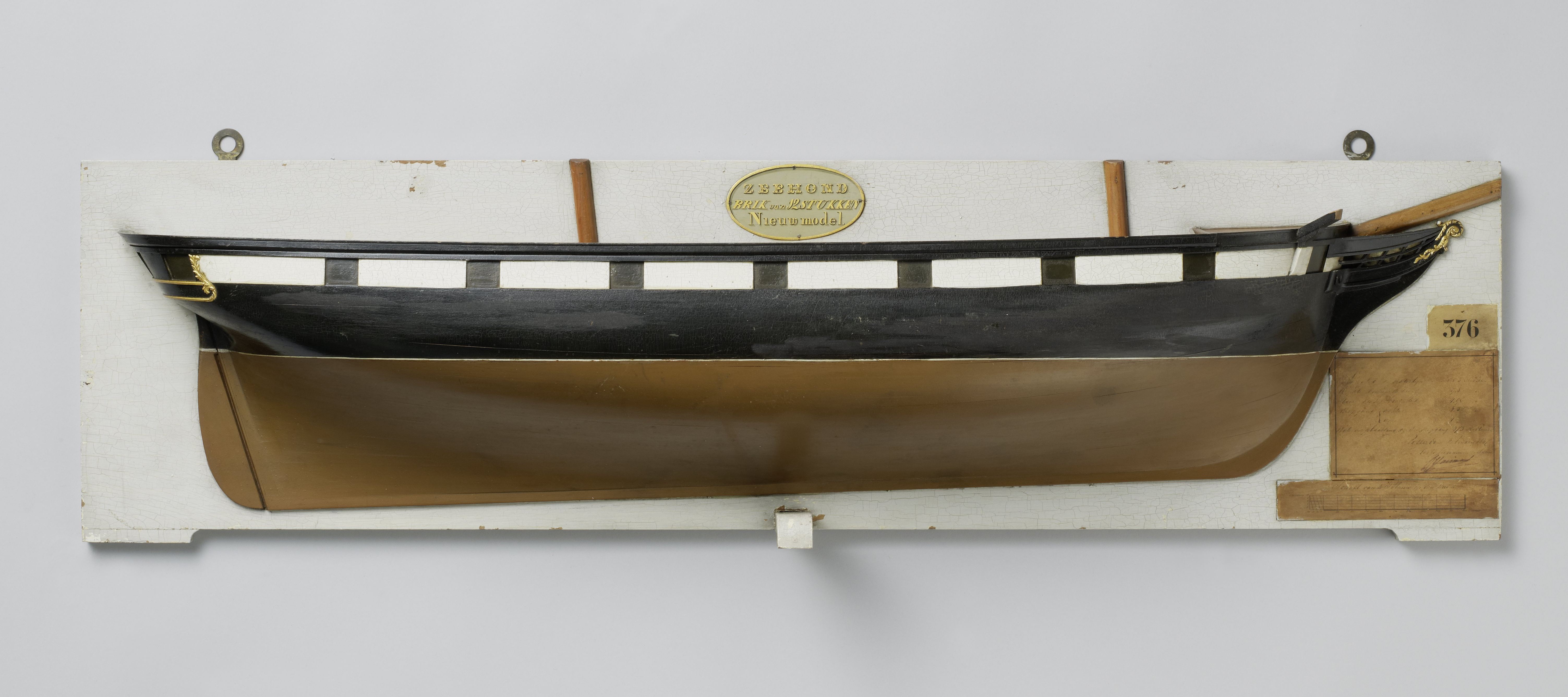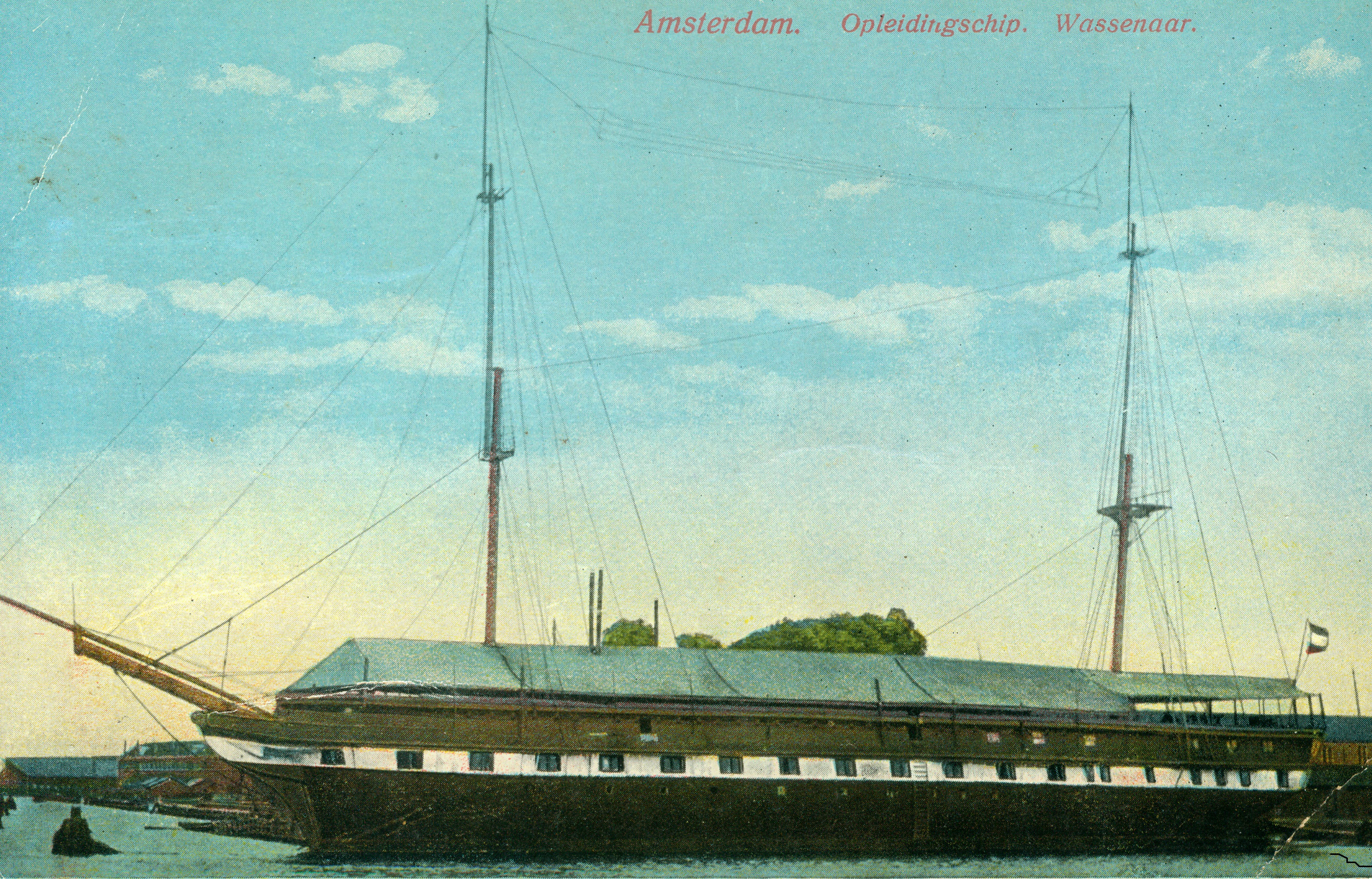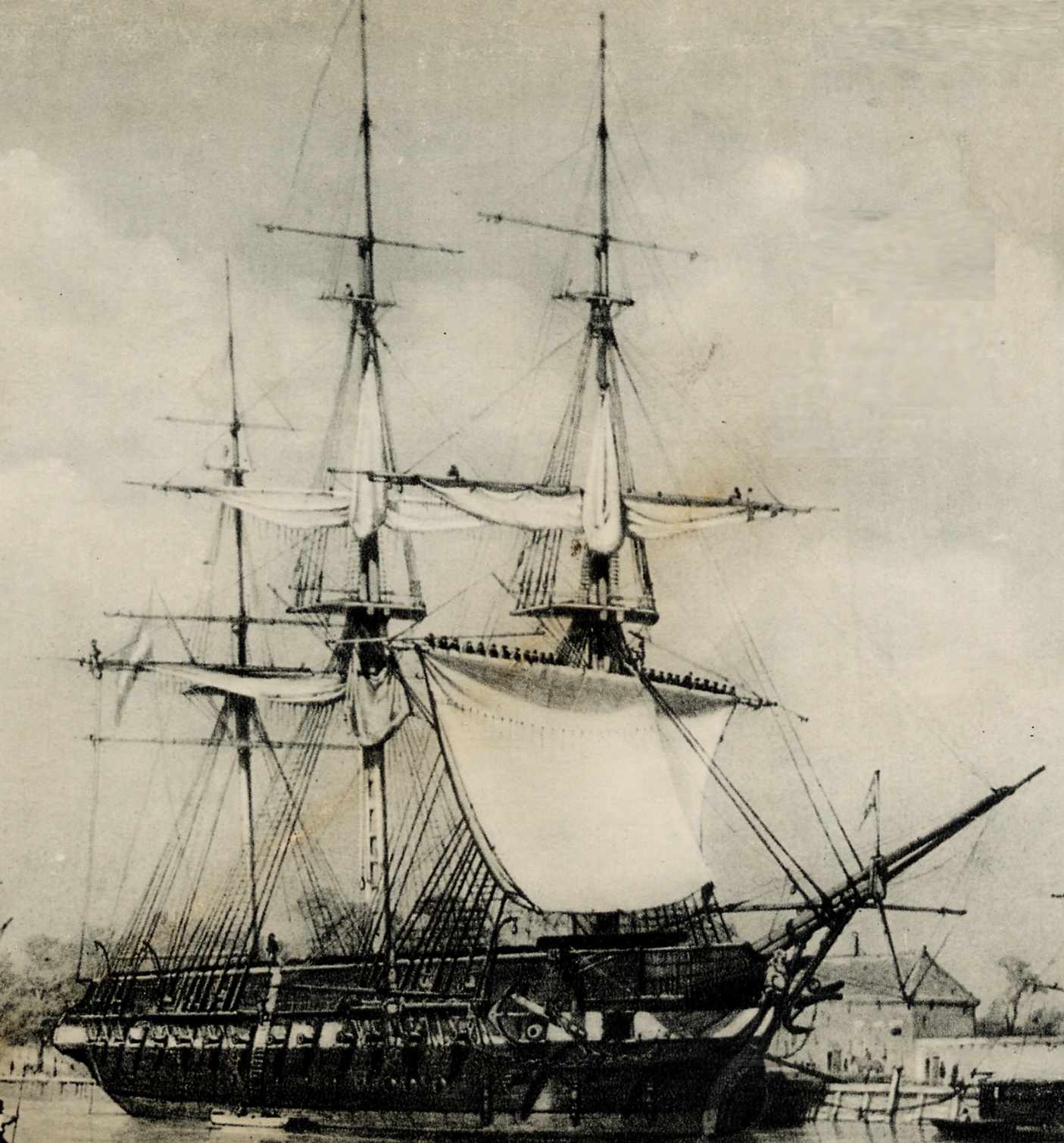Model NG-MC-376 Rijksmuseum Amsterdam, Netherlands. Original url
Zr. Ms. Admiraal van Wassenaar as training ship at Amsterdam, Netherlands
Zr. Ms. De Ruyter
An item reported the arrival on 30th August at Lisbon. Portugal by the Dutch training brig Zr. Ms. Zeehond (1) with on board midshipmen which were to be transferred to the screw steam frigates Zr. Ms. De Ruyter (2) and Admiraal van Wassenaar (3) also lying at Lisbon. The Admiraal van Wassenaar departed on the 1st towards Mediterranean to be followed on the 5th by the De Ruyter. The latter was to cruise in the Atlantic. Everything was well on board of these ships.
Notes
1. Brig 1st class, call sign GRCW, laid down at the navy yard of Rotterdam, Netherlands by C.J. Glavimans 12 January 1844, launched as last ship from that navy 12 June 1850, docked at the navy yard at Hellevoetsluis, Netherlands 9-11 August 1854, 3-31 May 1858, 9-15 February 1861, 10-13 October 1868, 14 July-3 October 1874, 27 January-28 July 1875, 27 September-6 October 1876, 11-13 April 1878, 24-26 March 1879, training ship at Hellevoetsluis 1873, stricken and stationed at Amsterdam, Netherlands to be used by the Kon. Ned. Zeil- en Roeivereniging for training sailors berthed in the Oosterdok 1882, replaced by the Pollux 23 May 1913, sold on an auction at the navy yard at Amsterdam 11.00 o’clock Wednesday 30 July, dimensions 30,5 (loadline) x 9,5 (inner hull) x 4,0 (fore)-4,5 (aft) x 4,98 (depth below main deck) metres. Displacement 473 tons and an armament of 12 guns.
2. Screw steamship 1st class, call sign GQST, composite built (wood with iron plated, of the Atjeh-class, on stocks at the navy yard at Amsterdam, Netherlands on slip 5 on 7 January 1879, launched on 22 September 1880, handed over by the navy on 18 October 1881, commissioned on 1 May 1885, decommissioned on 1 October 1894, repaired, commissioned on 1 September 1896,decommissioned at Nieuwediep, Netherlands on 27 May 1899, stricken and sold to be broken up on a public auction at Den Helder, Netherlands at 11.00 o’clock on Tuesday 28 May 1900 for ƒ 81.714.46½ to F.H. de Goeij, T.C. Bakker and J. Spruit of Den Helder, dimensions 80 (between perpendiculars)-92,1 (over all) x 12,5 x 6,1 metes, a displacement of 3.160 tons, 4 boilers, engine and boilers manufactured at N.S.M., Rotterdam, Netherlands, horsepower 3.000 hp, one screw, sail area 1.585 square metres, 3 masts, speed during trial with a medium draught of 5,49 metres 13,3 miles on 10 July 1885, speed on a trial with a medium draught of 5,88 metres, 13,75 miles on 27 August 1885, an armament of 6-17cm guns and 8-12cm guns and a crew numbering 280 men.
3. Call sign GQBE, wood-built, laid down at the navy yard at Amsterdam, Netherlands as the 74 gun ship of the line Piet Hein on 15 February 1833, disassembled 1850, laid down as a screw steam frigate designed by A.E. Tromp in 1853, launched as the Admiraal van Wassenaar on 6 September1856, commissioned on 16 July 1857, converted into a training ship at the navy yard of Amsterdam 1875, commissioned for training boys and ordinary seaman 11 April 1876, until 1 January 1913 used as training and guard ship at Amsterdam and sold on 28 May at Amsterdam for ƒ 37.781,00 to be broken up, displacement 3.650 tons, dimensions 62,36 (between perpendiculars)-72,86 (over all) x 15,72 x 6,80 metres, horsepower 300 hp, speed maximum 10,67 miles, armament 8 (4 medium 30pd guns, 4-12cm guns, 1877: long 12pd guns)-45 guns and a crew numbering 450 men. On 1 October 1876 were 335 boys trained divided over 4 groups, the youngest (group 1) numbered 108 boys, groups no.2-4 respectively 103, 60 and 64.



